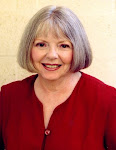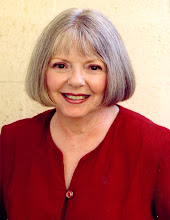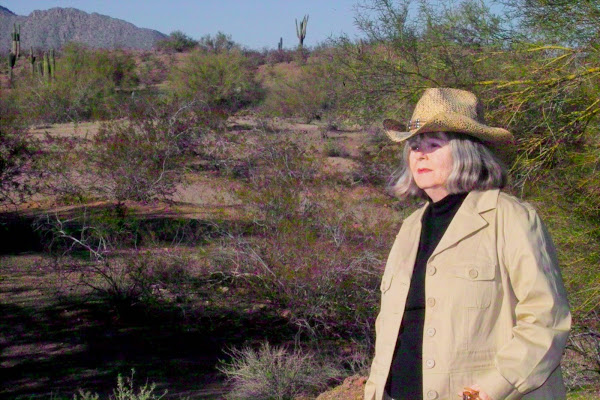Boy, was I wrong! I not only loved THE NITROGEN MURDER because of Camille’s clear,
non-condescending style, but I adored Dr. Gloria Lamerino, Camille’s amateur sleuth, an eccentric, super-smart physicist who lives above a funeral parlor. Who knew science could be so fascinating and funny?
And for you aspiring authors out there, take special note of Camille’s advice in the final four paragraphs.
INTERVIEW
Betty: You're the kind of person I used to scream and rum from -- a physics teacher. Just the though of physics, chemistry, algebra and any other of the sciences gives me a case of hives. So why do I understand -- and love -- your books?
Camille: See? Isn't science fun? It's all in who gives you your first introduction to math and science. I was lucky enough to have wonderful teachers who forgot to tell me that science was hard or that girls wouldn't be able to do it. By the time I was old enough to hear those myths, it was too late; I was hooked. I love it when someone reads my books and says, gee, that's not so hard is it? I don't know why physics and chemistry especially get such a bad rap. They're about what our universe is made of and how it works. Physics and Chemistry are what WE are made of,so how can they not be on every talk show?
Betty: How many of the "element" mysteries have there been so far? You > say there might be 109 cases in this series. Mind explaining that to those of us who are science dunderheads?
Camille: I've done 8, in order, from THE HYDROGEN MURDER to THE OXYGEN MURDER. In each I one take an interesting (and potentially deadly!) aspect of the element and build a mystery around it. Right now there are 112 (3 news ones in the last ten years!) elements with names. This translates into about 11 television seasons, if anyone cares to produce them! But I digress. The elements are our best shot at figuring out what are the basic building blocks of our universe. If the universe were leveled today, what would you need to rebuild it? The answer is: the elements of the periodic table.
Betty: Is your amateur sleuth Dr. Gloria Lamerino based on you? If so, how'd you dare do it? And if not, why not?
Camille: Lots of "coincidences," like Italian-American background and general world view of course. But Gloria is persistent (an amateur sleuth has to be!) and I'm not. When things get tough, I quit. And there's another clue as to how easy the sciences are. I stayed with them. No disciplined memorization required in physics, for example. If you forget how the law of gravity works, just drop something and watch.
Betty: Why is Gloria living above a funeral home?
Camille: Because some people think physics and physicists are boring (see above), I thought I would give her a funky place to live. Also, this arrangement of a funeral parlor with the family living upstairs is very common on the east coast where she lives. I have a cousin who is a freelance embalmer (but that's for another time) and I get great stories from him.
Betty: While I love Dr. Gloria (what a ballsy scientist!), I hear you've come up with a new sleuth and series. Tell me about that.
Camille: My other big interest, besides promoting science and technology literacy, is miniatures -- making dollhouse furnishings, stand-alone scenes, and roomboxes. My new protagonist, Geraldine Porter, a retired English teacher, is a miniaturist and amateur sleuth. Maddie, her 10-year-old granddaughter came out of the blue to be her partner, so now I have a granddaughter/grandmother series! The first one, MURDER IN MINIATURE will be out in February.
Betty: How in the world did you go from a science lab to dollhouses?
Camille: Science is also all about modeling. Atoms are not "real" in the sense of being hard little objects. They are a device, a way to "explain" certain behavior of materials. That is, the world behaves AS IF there are these things we've given the name atom to ... it's all a fiction, like dollhouses and mystery novels! But they all "work" for us in that they give us an understanding
of ourselves and the universe and that's what they have in common with art, music, and all human endeavors. OOPS, I'm getting way too liberal artsy here, sorry.
Betty: I hear you've begun blogging yourself. Tell me why.
Camille: I have this fear of being left out! I celebrated my &)-th birthday (typo intentional!) this year and I feel it's important to stay current. I hooked up with other hobby mystery writers at killerhobbies.blogspot.com. It's a nice way to showcase my miniatures, too. You can see some of my little creations there as well as on my own website. My latest project is making manuscript pages that are 0.7 inches wide by 0.9 inches long (roughly!) to represent an 8 1/2 by 11 sheet, for a 1-inch scale scene. I'm using a small section of text and printing at a reduced size. Trial and error got me to a nice layout. You can't exactly read the text without a magnifier, but even with the naked eye you can tell it's a manuscript page. I'm making hundreds of these to spread around the desktops and floors of office scenes.
Betty: What kind of advice do you have for aspiring writers?
Camille: Advice part one: do whatever it takes to get your manuscript in the best shape that it can be. This usually means that people other than your maid of honor and your mother need to read it and tell you it's wonderful. It also usually means many hours of editing and critiquing, alone and with others. This is hard for many adults to swallow. They're already good at something, and have often been paid well for that knowledge or skill. Why bother starting from scratch to learn another skill? They think that simply a good idea and a few cool turns of phrases, set to paper, should be enough, and when it isn't ... fugeddaboudit.
Advice part two: network, network, network. Take classes, join Sisters in Crime (plug), hang out with people in the business, learn how to prepare a killer proposal package, and get hugs when the rejections start coming in.
My first book took 60 years to write. But my actual focused time was more like 2 years, during which I took classes and networked with other writers. I sent my first packages to agents and publishers in September and got my first acceptance the following April. Seven months. Like a premature baby. I did 2 books with this small press, then tried again to get an agent and had 5 offers that time.
Though parts of this business don't make sense (ahem), I'm very glad I'm in it. I'm glad I survived the blow that all my degrees and advanced age didn't entitle me to anything in the new world I was entering ... I took it as an exciting new adventure, which it has been. And getting invited to your blog spot, Betty, has been a great reward!
* * *
To find out more about Camille’s “elemental” murders, check out her website at
www.minichino.com. For more writing tips, check the archives of this blog, where new interviews and/or writing tips are posted weekly.
Betty: You're the kind of person I used to scream and rum from -- a physics teacher. Just the though of physics, chemistry, algebra and any other of the sciences gives me a case of hives. So why do I understand -- and love -- your books?
Camille: See? Isn't science fun? It's all in who gives you your first introduction to math and science. I was lucky enough to have wonderful teachers who forgot to tell me that science was hard or that girls wouldn't be able to do it. By the time I was old enough to hear those myths, it was too late; I was hooked. I love it when someone reads my books and says, gee, that's not so hard is it? I don't know why physics and chemistry especially get such a bad rap. They're about what our universe is made of and how it works. Physics and Chemistry are what WE are made of,so how can they not be on every talk show?
Betty: How many of the "element" mysteries have there been so far? You > say there might be 109 cases in this series. Mind explaining that to those of us who are science dunderheads?
Camille: I've done 8, in order, from THE HYDROGEN MURDER to THE OXYGEN MURDER. In each I one take an interesting (and potentially deadly!) aspect of the element and build a mystery around it. Right now there are 112 (3 news ones in the last ten years!) elements with names. This translates into about 11 television seasons, if anyone cares to produce them! But I digress. The elements are our best shot at figuring out what are the basic building blocks of our universe. If the universe were leveled today, what would you need to rebuild it? The answer is: the elements of the periodic table.
Betty: Is your amateur sleuth Dr. Gloria Lamerino based on you? If so, how'd you dare do it? And if not, why not?
Camille: Lots of "coincidences," like Italian-American background and general world view of course. But Gloria is persistent (an amateur sleuth has to be!) and I'm not. When things get tough, I quit. And there's another clue as to how easy the sciences are. I stayed with them. No disciplined memorization required in physics, for example. If you forget how the law of gravity works, just drop something and watch.
Betty: Why is Gloria living above a funeral home?
Camille: Because some people think physics and physicists are boring (see above), I thought I would give her a funky place to live. Also, this arrangement of a funeral parlor with the family living upstairs is very common on the east coast where she lives. I have a cousin who is a freelance embalmer (but that's for another time) and I get great stories from him.
Betty: While I love Dr. Gloria (what a ballsy scientist!), I hear you've come up with a new sleuth and series. Tell me about that.
Camille: My other big interest, besides promoting science and technology literacy, is miniatures -- making dollhouse furnishings, stand-alone scenes, and roomboxes. My new protagonist, Geraldine Porter, a retired English teacher, is a miniaturist and amateur sleuth. Maddie, her 10-year-old granddaughter came out of the blue to be her partner, so now I have a granddaughter/grandmother series! The first one, MURDER IN MINIATURE will be out in February.
Betty: How in the world did you go from a science lab to dollhouses?
Camille: Science is also all about modeling. Atoms are not "real" in the sense of being hard little objects. They are a device, a way to "explain" certain behavior of materials. That is, the world behaves AS IF there are these things we've given the name atom to ... it's all a fiction, like dollhouses and mystery novels! But they all "work" for us in that they give us an understanding
of ourselves and the universe and that's what they have in common with art, music, and all human endeavors. OOPS, I'm getting way too liberal artsy here, sorry.
Betty: I hear you've begun blogging yourself. Tell me why.
Camille: I have this fear of being left out! I celebrated my &)-th birthday (typo intentional!) this year and I feel it's important to stay current. I hooked up with other hobby mystery writers at killerhobbies.blogspot.com. It's a nice way to showcase my miniatures, too. You can see some of my little creations there as well as on my own website. My latest project is making manuscript pages that are 0.7 inches wide by 0.9 inches long (roughly!) to represent an 8 1/2 by 11 sheet, for a 1-inch scale scene. I'm using a small section of text and printing at a reduced size. Trial and error got me to a nice layout. You can't exactly read the text without a magnifier, but even with the naked eye you can tell it's a manuscript page. I'm making hundreds of these to spread around the desktops and floors of office scenes.
Betty: What kind of advice do you have for aspiring writers?
Camille: Advice part one: do whatever it takes to get your manuscript in the best shape that it can be. This usually means that people other than your maid of honor and your mother need to read it and tell you it's wonderful. It also usually means many hours of editing and critiquing, alone and with others. This is hard for many adults to swallow. They're already good at something, and have often been paid well for that knowledge or skill. Why bother starting from scratch to learn another skill? They think that simply a good idea and a few cool turns of phrases, set to paper, should be enough, and when it isn't ... fugeddaboudit.
Advice part two: network, network, network. Take classes, join Sisters in Crime (plug), hang out with people in the business, learn how to prepare a killer proposal package, and get hugs when the rejections start coming in.
My first book took 60 years to write. But my actual focused time was more like 2 years, during which I took classes and networked with other writers. I sent my first packages to agents and publishers in September and got my first acceptance the following April. Seven months. Like a premature baby. I did 2 books with this small press, then tried again to get an agent and had 5 offers that time.
Though parts of this business don't make sense (ahem), I'm very glad I'm in it. I'm glad I survived the blow that all my degrees and advanced age didn't entitle me to anything in the new world I was entering ... I took it as an exciting new adventure, which it has been. And getting invited to your blog spot, Betty, has been a great reward!
* * *
To find out more about Camille’s “elemental” murders, check out her website at
www.minichino.com. For more writing tips, check the archives of this blog, where new interviews and/or writing tips are posted weekly.










No comments:
Post a Comment